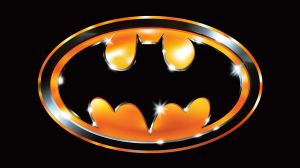Game of Thrones‘ final season has certainly had no shortage of buzzworthy moments, but it’s safe to say that fans are still reeling from a particularly controversial one. In the days since the season’s fourth episode, “The Last of the Starks”, originally aired, an ever-growing number of people have questioned the death of Rhaegal the dragon — and are even using science to do so.
Videos by ComicBook.com
A hand-drawn chart from Reddit user mikedakwik recently went viral, which breaks down the science and math that had to go Rhaegal getting shot with a spear by Euron Greyjoy. As they explain in the comments, the calculated distance that Rhaegal was shot at is almost exactly one kilometer, which adds a whole other wrinkle to the fact that Drogon didn’t also get shot in the firefight.
[SPOILERS] Season 8, episode 4 scorpion math I did on lunch break… my theory (and metric conversion) in the comments. from r/gameofthrones
Tor’s Michael Livingston expanded on the math of it all even more, revealing that the fact that the spears appeared to shoot straight – as opposed to a curved parabola that would normally happen with these projectiles – opens a whole other can of worms.
“Euron clearly had this moving target in his non-adjustable sights, because he hit it.” Livingston explains in his piece. “Now, I’m gonna reckon that Rhaegal’s neck is about 5 meters thick from top to bottom, and we know that this target is moving horizontally (5 m/s) and that the bolt itself will drop from whatever he’s aiming at. Given that he hit Rhaegal smack dab in the middle of its throat, that drop can’t be much more than 2.5 meters. In other words, he would need to be aiming for the very nose of the beast, and the bolt would need to cover the 1,000 meter distance in about half a second. The bolt, therefore, would need to have an initial velocity of about 2,000 m/s. By comparison, a modern sniper rifle propels a bullet around 800 to 1,000 m/s.”
“Having the projectile drop just 2.5 meters over its first 1,000 meters of travel means it’s a wide one.” Livingston continues. “If we figure that the angle, from Euron’s perspective, between the sea and Rhaegal is about 20 degrees, we can use our initial velocity to trace out that parabola mathematically. I’m just a lowly medievalist here, folks, but I’m calculating that Euron’s bolt, if it hadn’t hit the dragon, would have reached a maximum elevation of around 14 miles above sea level before it nosed back down to earth. That’s, um, around twice the cruising altitude of most commercial airliners.”
Of course, the argument can always be made that Thrones‘ high fantasy doesn’t need to obey the usual laws of math and science, but the breakdown of it all certainly is interesting. If nothing else, it proves that Euron and his fleet might be a more formidable threat than some had expected.
What do you think of the science behind Game of Thrones’ Rhaegal death? Share your thoughts with us in the comments below.
Game of Thrones airs Sundays at 9/8c on HBO.








